Summer Reading List: 5 Books for Leaders
Latest Posts
- Navigating Leadership Transitions
(posted: 04/21/2025)Strategies for your leadereship success
- 2024 Reading List for Leaders
(posted: 07/01/2024)The right book can be a leadership game-changer.
- Coach's Notebook: Exec Presence for Leaders
(posted: 05/08/2024)As a leader your charisma is critical. Learn how to develop it!
Blog Archives
Kristi posts to her site about once a month, but frequently more often. She also appears as a featured contributer on select other sites. If you would like to be notified when new blogs are posted, please subscribe to our newsletter.
If you are interested in Kristi guest posting to your site feel free to contact us.
Summer Reading List: 5 Books for Leaders
(posted: June 19th, 2023)

[Any links in this post are provided as a courtesy to the reader. The reviews are my own opinions, all of the books were purchased, and I do not receive any kind of compensation if you click on a link!]
Successful leaders, and successful people in general, are readers.
Reading can help fight depression, make you more confident, and a better decision maker. Reading is a great way to acquire new information, come up with creative ideas, and learn worthwhile tips that can improve your personal and professional life. Is it any wonder some of the world's biggest business leaders are avid readers?
This year, there are five books on my list, but if you can only read two of them, that's still a win!
These titles are great choices for leaders, and aspiring leaders who want to continue to learn, grow, and work to be the best possible version of themselves!
Leaders: 5 Books to Read This Summer
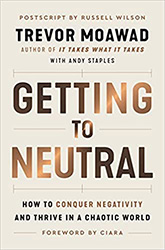 1) Getting to Neutral: How to Conquer Negativity and Thrive in a Chaotic World', by Trevor Moawad
1) Getting to Neutral: How to Conquer Negativity and Thrive in a Chaotic World', by Trevor Moawad
This is a step-by-step guide that shows you how to defeat negativity and thrive. You may be surprised to find that neutral thinking, not blind positivity, is the answer. Neutral thinking is a judgment-free, process-oriented approach that helps us coolly assess situations in high-pressure moments. The only thing worse than negative thinking is negative talking. When you verbalize the negative thoughts, it multiplies its effect.
This process is about assessing problems with clarity and calm before taking action. It keeps imagination from running wild and creating unnecessary anxiety. The techniques Moawad offers help us manage these moments, though they don’t eliminate the fear or doubt. They simply allow us to keep the proper frame of mind as we determine next steps, and that is huge! Learning how to "downshift" into neutral helps you slow down, think clearly, and create a plan.
For the "hair on fire" moments you encounter routinely as a leader, and which can knock you off course and out of alignment, this is a powerful path to bouncing back and succeeding.
Learning to harness the power of our minds to "shift into neutral" is such a valuable skill, whether we apply it to parenting, leading, or even caregiving. Thinking neutrally about a challenge translates into preparing thoroughly, selecting the likely path to success, and following it.
Neutral thinking shares similarities with staying in the moment and being present. Like being here, now, it helps to keep you from future tripping and what-ffing.
2) The Boy, the Mole, the Fox and the Horse, byCharlie Mackesy
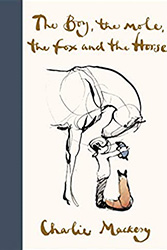
This is a heartwarming, yet also thought-provoking, illustrated book. It tells the story of an unlikely friendship between a young boy, a curious mole, a wise fox, and a gentle horse, and explores universal issues and life lessons. It offers inspiration and hope in challenging and uncertain times.
The author explores themes of friendship, self-discovery, and the power of empathy. The characters learn about acceptance, kindness, forgiveness, and the strength that comes from embracing vulnerability. The illustrations beautifully capture the emotions and expressions of the characters, adding depth and warmth to the story.
This is one of those books that is loved by all, no matter their age. It makes a great gift, and I am always giving my copy away and having to get another!
3) Learning to SOAR: Creating Strategy that Inspires Innovation and Engagement', by Jacqueline Stavros
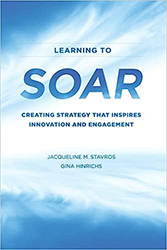
"Learning to SOAR" introduces a positive, strength-based approach to strategic thinking and planning in organizations. The acronym "SOAR" stands for Strengths, Opportunities, Aspirations, and Results. This framework is intended to supplant the traditional SWOT with which you may be familiar, and to help leaders create strategies that foster innovation, engagement, and sustainable growth.
The authors emphasize the importance of shifting from a problem-focused mindset to a strengths-based mindset. They say that, by focusing on the strengths and positive attributes of individuals, teams, and organizations, leaders can create strategies that inspire and engage people, leading to greater alignment and better outcomes.
I've used the SOAR framework with several clients now, and I have to agree. The end result has been far more excitement and engagement than I usually see in strategic planning sessions!
Based on Appreciative Inquiry, the process starts with four questions:
- Strengths - What are we great at?
- Opportunities - What are the possibilities?
- Aspirations - What are our dreams or wishes?
- Results - What are meaningful outcomes?
The book then offers practical guidance, tools, and case studies to help you apply the SOAR framework in your own organization. It encourages leaders and managers to engage stakeholders in collaborative conversations that uncover strengths, explore opportunities, articulate aspirations, and define desired results.
Overall, "Learning to SOAR" provides a positive and empowering approach to strategy development, emphasizing the importance of strengths and engagement in achieving organizational goals.
4) Time to Think: Listening to Ignite the Human Mind', by Nancy Kline
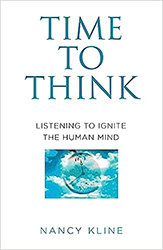
Many of you know that I have been a fan of, and a continuing student in, active, genuine, listening. Time to Think explores the power of deep listening as a catalyst for personal and professional growth, creativity, and effective leadership.
Listening is one of the traits that makes us human. AI doesn't listen. ChatGPT doesn't actually LISTEN to you, though it may mimic a version of listening-like attention. Of all the traits that define successful leadership, listening and asking great questions are two of the most important, and least common.
The author highlights the significance of creating a thinking environment where individuals feel genuinely listened to and valued. Kline introduces the concept of the "Thinking Partnership," which involves creating a safe and respectful space for open and uninterrupted thinking. This environment encourages individuals to share their thoughts, ideas, and perspectives without judgment or interruption.
She suggests that when leaders provide dedicated time and attention to truly listen to their employees, they can unlock the full potential of their teams. This type of listening creates an atmosphere where individuals feel empowered, respected, and motivated to contribute their best ideas and solutions. As a result, leaders can tap into the collective intelligence of their teams and make more informed and inclusive decisions. By actively listening to their team members, leaders help foster an environment of trust, collaboration, and innovation.
Kline offers practical techniques and insights throughout the book, such as the power of asking open-ended questions, creating space for silence, and suspending assumptions. These practices enable leaders to deepen their listening skills and promote a thinking environment that encourages creativity, problem-solving, and personal growth.
5) How to Get the Most Out of Coaching: A Client’s Guide for Optimizing the Coaching Experience', Karen Davis & Alex Mill
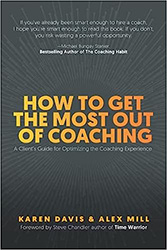
This book provides a clear overview of the coaching process, including its purpose, benefits, and what to expect. It helps clients understand how coaching works, the role of the coach, and the client's responsibilities within the coaching relationship.
Knowing what to expect, and what you want to achieve, are important when you start working with an executive coach. Remember, your coach is there to guide you, not to tell you what to do. In that spirit, the book offers a few more key points to understand:
- Setting goals and clarifying expectations for the coaching experience. It emphasizes the importance of articulating specific objectives and desired outcomes, enabling clients to align their coaching efforts with their personal and professional aspirations.
- Building a strong coaching relationship. The book offers insights on how to establish a productive and trusting relationship with a coach. It provides guidance on effective communication, active participation, and building rapport, fostering an environment conducive to growth and development.
- Maximizing the coaching sessions.' Strategies to actively engage in coaching sessions and make the most of the time spent with your coach. It provides techniques for reflection, self-assessment, and exploring new perspectives. You can apply these strategies to deepen your learning, gain insights, and generate actionable steps towards your goals during coaching sessions.
- Leveraging accountability and action.' Accountability and action are tremendously important in coaching. The book gives you practical tools and techniques for setting and tracking goals, staying motivated, and taking consistent action.
- Sustaining growth beyond coaching.' How you can continue your development journey even after the formal coaching relationship ends. It provides guidance on self-coaching techniques, ongoing reflection, and maintaining momentum. You'll learn how to apply what you've learned from coaching to continue your personal and professional growth over the long term.
I'm finding that this book is a valuable resource for coaching clients, equipping them with the knowledge, strategies, and tools to optimize their coaching experience.
Personal Development IS Leadership Development
This year’s book list, as always, contains many best practices that I use in my work with clients, including coaching work with executives and teams. Building your inner strengths and resilience is an important element of growing as a leader!
And, if you are hungry for more great reads, drop me a line. I have many more suggestions and I am always thrilled to share.
- Have you read any of the books on this year's list? If so, please share your thoughts in the comments.
- Which one book on this list sounds most interesting to you?
- What title would you add to the list?
- What else is on your reading list this summer?
Sign Up for our newsletter and never miss another post.
